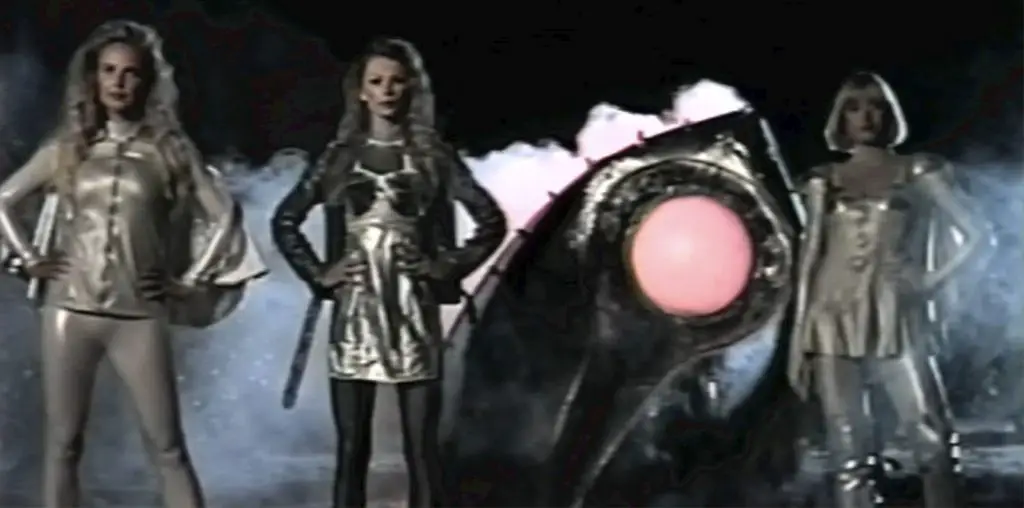
BOOTLEG FILES 376: “The New Gulliver” (1935 Soviet fantasy film by Aleksandr Ptushko).
LAST SEEN: The film can be seen on YouTube.
AMERICAN HOME VIDEO: None.
REASON FOR BOOTLEG STATUS: An elusive title.
CHANCES OF SEEING A COMMERCIAL DVD RELEASE: Seriously, I am surprised that it is still unavailable on U.S. DVD.
Back in the 1930s, the U.S. and U.S.S.R. film industries shared the common goal of spiriting away audiences from the grim realities of the decade to an idealized escapist universe on the big screen. However, the two countries had very different routes to this goal: Hollywood created carefree films filled with penthouses occupied by tuxedo-clan gents and platinum blondes in frilly gowns, while Moscow opted for cinematic odes to wheat tractors and communities of ragged peasants sowing seeds in honor of Lenin. As you might imagine, the American escapism was a little more fun.
But that’s not to say that the Soviets were completely devoid of a sense of humor. Where else but in the U.S.S.R. could Jonathan Swift’s 18th century landmark “Gulliver’s Travel” be reconfigured into a hymn to factory labor – within the context of a stop-motion animated film, no less!
The driving force behind this unlikely endeavor was Aleksandr Ptushko, one of the pioneers of Russian animation. Ptushko focused on stop-motion animation, a creative art form that dates back to the very beginning of the film industry. Stop-motion animation in the first two decades of the 20th century was restricted to brief novelty shorts, until the 1925 U.S. feature “The Lost World” ratcheted up the stakes considerably. Willis O’Brien, the animator responsible for that production, would further expand the genre with the 1933 masterpiece “King Kong.”
Unlike O’Brien, Ptushko found himself working under the auspices of the state-run Mosfilm operation, which viewed cinema as a tool to reinforce the Communist dogma. Although some Soviet films gained a degree of international respect for their daring visual style, most of them were so clumsy and strident that they often seemed like a celluloid exercise in hitting audiences over the head with a hammer and sickle. Ptushko found himself in the unenviable position of creating a genuine entertainment that contained elements of the Communist Party line.
“The New Gulliver” opens on a summer day at a Young Pioneer camp, where pre-teen boys and girls march in military formation while singing about wonderful life is for them. The campers complete work on a boat that they sail to a nearby island, where a young adult counselor entertains them by reading aloud from Swift’s “Gulliver’s Travels.” One of the kids, a boy named Petya, becomes sleepy shortly after the reading commences. As he falls asleep, his hair and clothing change into early 18th century styles – and he awakens as Dr. Petya Gulliver, the physician on an ocean-bound ship.
Petya manages to quell a mutiny that is generated by a bunch of slapstick pirates, but the ship is wrecked at sea during a storm. Petya washes ashore on the beach at Lilliput, where the miniature inhabitants view him as a humongous giant. The Lilliputians tie Petya to the ground and wait for instructions from their king on how to handle this “living mountain.”
At this point, “The New Gulliver” bids farewell to the original Gulliver and turns into something completely different. Lilliput is a tyrannical kingdom, with a decadent cabal of ill-tempered government ministers running the show. The king is a giggling imbecile who is easily manipulated by his ministers – whenever he is expected to give a speech, he lip-syncs to a long-playing record that is placed on a phonograph hidden under the royal robes.
When Petya awakes, he easily breaks the bonds that were meant to restrain him. The Lilliputians treat him as a guest, but Petya is confused by the demographics of the kingdom. “I don’t see people,” he exclaims. “Only soldiers.”
The “people,” it seems, live and work in underground factories where they are planning a revolution. Petya’s notebook from his wrecked ship somehow manages to get into the workers’ hands, and these subterranean Stalinists learn that Petya is their comrade. A workers’ revolt takes place and Petya lends his big hands in routing the monarchists. With victory assured and a teeny-weeny workers’ paradise created, Petya wakes up back on the Young Pioneers’ island – hey, it was all a dream!
For contemporary viewers, “The New Gulliver” is best appreciated for its daring visual style. The Lilliputian ruling elite was depicted with intricate figurines made out of wood, metal, rubber, clay and cloth. Each figurine had detachable heads that enabled a variety of expressions, and some figurines had up to 300 different heads. In comparison, the underground workers pretty much look alike: shirtless, studly men with Moe Howard haircuts, bronzed skin and near-identical facial features. There was also a troop of dwarf performers that came up to the ankles of the Lilliputians. All told, Ptushko and his team created 3,000 different figurines for this film.
A great deal of “The New Gulliver” employs highly inventive camerawork, including a complex tracking shot through the underground factory and an innovative depiction of the king racing up a spiral staircase as his monarchy is under attack. There is also a droll musical number, where a “ballet” company (who look suspiciously like cabaret dancers) shakes their stuff while a daffy tenor warbles “My Lilliputian” for a bemused Petya.
“The New Gulliver” received international acclaim, despite its political messaging. The National Board of Review named it among the best films of 1935. Andre Sennwald, reviewing the film in The New York Times, hailed it as “a puppet-world with a technical brilliance and a richness of comic imagination that rivals Walt Disney’s pen-and-ink masterpieces” – though he also bemoaned its “sledgehammer propaganda.” Ptushko was rewarded by the Kremlin with his own department at Mosfilm to create imaginative fantasy films, most notably the 1946 production “The Stone Flower,” the first full-color Russian film.
One of the more mysterious aspects of “The New Gulliver” is the youth who played Petya. Vladimir Konstantinov had no previous screen credits and is not credited with any additional films. According to an unreferenced online article, he was killed in Estonia in 1944 during World War II, though it is uncertain whether he was a military or civilian casualty.
Over the years, however, “The New Gulliver” has been an elusive commodity in the U.S. Prints have turned up for various film society retrospectives of Soviet cinema, but “The New Gulliver” has yet to have a commercial U.S. release in any home entertainment format. A battered print can be found on YouTube – it appears to be missing a few minutes of footage and the English subtitles are often hard to read, but it is better than nothing.
Despite its red flag waving, “The New Gulliver” represents an important landmark in the development of animation and Soviet cinema. It is an unpredictable and idiosyncratic production that deserves to be appreciated anew.
IMPORTANT NOTICE: The unauthorized duplication and distribution of copyright-protected material, either for crass commercial purposes or profit-free s***s and giggles, is not something that the entertainment industry appreciates. On occasion, law enforcement personnel boost their arrest quotas by collaring cheery cinephiles engaged in such activities. So if you are going to copy and distribute bootleg videos and DVDs, a word to the wise: don’t get caught. Oddly, the purchase and ownership of bootleg videos is perfectly legal. Go figure!

